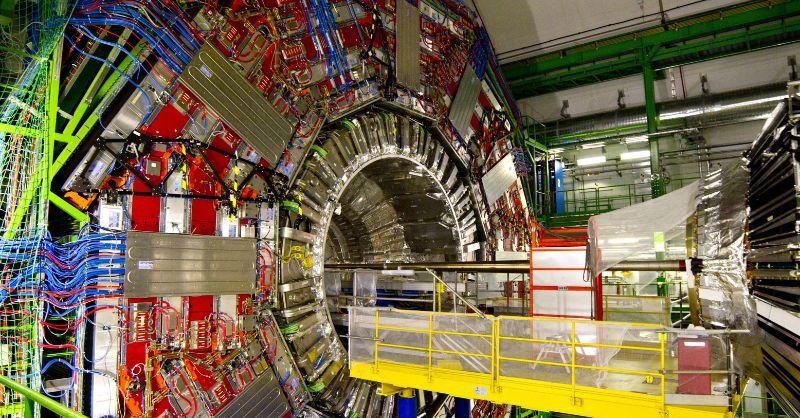
The Large Hadron Collider (LHC) is a marvel of human ingenuity, designed to unravel the secrets of the universe by smashing subatomic particles together at nearly the speed of light. Located near Geneva, Switzerland, and operated by CERN, this gigantic machine has revolutionized our understanding of particle physics. But as with any massive technological achievement, the question arises: What happens if the LHC explodes?
Although the LHC is a highly controlled environment with multiple safety measures in place, exploring this hypothetical scenario offers an opportunity to understand its construction, operations, and safety protocols. Let’s delve into this fascinating topic step by step.
Understanding the LHC’s design
The LHC is a circular tunnel with a circumference of 27 kilometers, buried about 100 meters underground. It is built to accelerate protons and heavy ions to near-light speeds using superconducting magnets cooled by liquid helium. These particles collide at specific points, generating high-energy events that mimic conditions shortly after the Big Bang.
Key components include:
– Cryogenic systems: Maintain the magnets at -271°C, close to absolute zero.
– Beamlines: Guide the accelerated particles.
– Detectors: Instruments like ATLAS and CMS record the results of collisions.
– Radiation shielding: Protects operators and the environment from particle emissions.
Possible scenarios in case of an explosion
Mechanical Failures: If mechanical or structural failures were to occur in the LHC, such as a magnet quench (where superconducting magnets lose their superconductivity), it would not result in an explosion but rather a controlled shutdown. Such incidents have happened before, like the 2008 helium leak, which caused significant damage but no catastrophic outcomes.
Cryogenic System Failure: The LHC’s magnets rely on liquid helium for cooling. A failure in the cryogenic system could lead to a rapid helium release. While helium is not flammable or explosive, a sudden release could cause physical damage to the infrastructure and expose personnel to risks like oxygen displacement.
Energy Release: The energy stored in the LHC’s magnets and beams is immense. A beam loss event could damage internal systems, but the collider is equipped with beam dump systems to safely disperse excess energy. This ensures that energy release does not translate into an uncontrolled explosion.
Environmental and safety protections
CERN has implemented rigorous safety protocols to minimize risks:
Redundant Systems: Backup power supplies and cooling systems ensure stability.
Controlled Environment: The underground location prevents the spread of radiation or debris in case of an accident.
Radiation Management: The LHC’s design ensures that any radiation produced is contained within its structure.
Even in a worst-case scenario, the risk to surrounding areas and populations is minimal.
What about the high-energy collisions?
One of the most controversial topics surrounding the LHC is the energy of its collisions. Concerns about phenomena like black holes, strangelets, or vacuum bubbles have fueled public anxiety. Let’s address these concerns directly.
The safety of the LHC
The LHC can achieve unprecedented energies, but these are dwarfed by cosmic-ray collisions that occur naturally in our atmosphere and throughout the universe. Over the decades, scientists have rigorously assessed the safety of high-energy particle collisions.
Cosmic Rays: Cosmic rays frequently strike the Earth with energies far greater than those produced in the LHC. The fact that the Earth, Sun, and other astronomical bodies remain intact is evidence that high-energy collisions pose no existential risk. The LHC essentially recreates these natural phenomena under controlled laboratory conditions.
Microscopic Black Holes: Speculations about the LHC producing microscopic black holes arise from certain theoretical models. However:
– Such black holes, if created, would be incredibly unstable and decay instantly via Hawking radiation.
– Even hypothetical stable black holes would not accumulate matter rapidly enough to pose a threat, as demonstrated by cosmic-ray collisions with dense astronomical objects like neutron stars.
Strangelets: Strangelets, hypothetical clumps of “strange matter,” are deemed highly unlikely to form. Even if they did, they would decay almost instantly due to the high temperatures and energies in the LHC, making their existence short-lived and harmless.
Vacuum Bubbles: The idea of a vacuum bubble—where the universe transitions to a lower-energy state—has no empirical basis. If such a phenomenon were possible, it would already have occurred due to cosmic-ray collisions happening across the universe.
Magnetic Monopoles: Magnetic monopoles, hypothetical particles with a single magnetic charge, would be far too massive to be produced by the LHC. Furthermore, their existence would have already been observed in natural cosmic-ray events.
Expert opinions on LHC safety
Renowned physicists and Nobel laureates have unequivocally supported the safety of the LHC. For example:
Stephen Hawking: “The world will not come to an end when the LHC turns on. The LHC is absolutely safe.”
Sir Roger Penrose: “There is no scientific basis whatever for such wild speculations.”
CERN Scientific Policy Committee: The conclusions of the LHC Safety Assessment Group have been reviewed and endorsed by leading experts, ensuring that LHC operations pose no danger.
Should you worry?
The LHC is one of the safest large-scale scientific experiments ever conducted. While the possibility of an explosion due to mechanical failure or energy release exists, the consequences would be localized and manageable, thanks to extensive safety protocols. High-energy collisions, on the other hand, mimic natural processes that have occurred billions of times without catastrophic consequences.
Ultimately, the LHC represents a remarkable achievement in human exploration of the unknown. Its safety measures and scientific scrutiny make it a testament to our ability to push boundaries responsibly. The next time you hear about the LHC, think not of hypothetical dangers but of the incredible discoveries it has brought—and will continue to bring—to our understanding of the universe.



